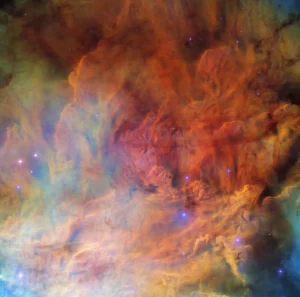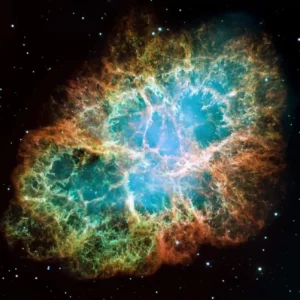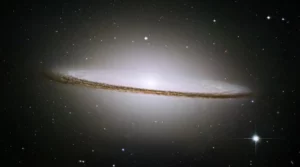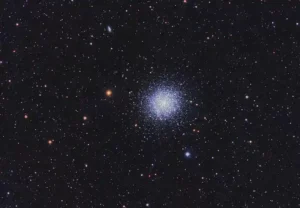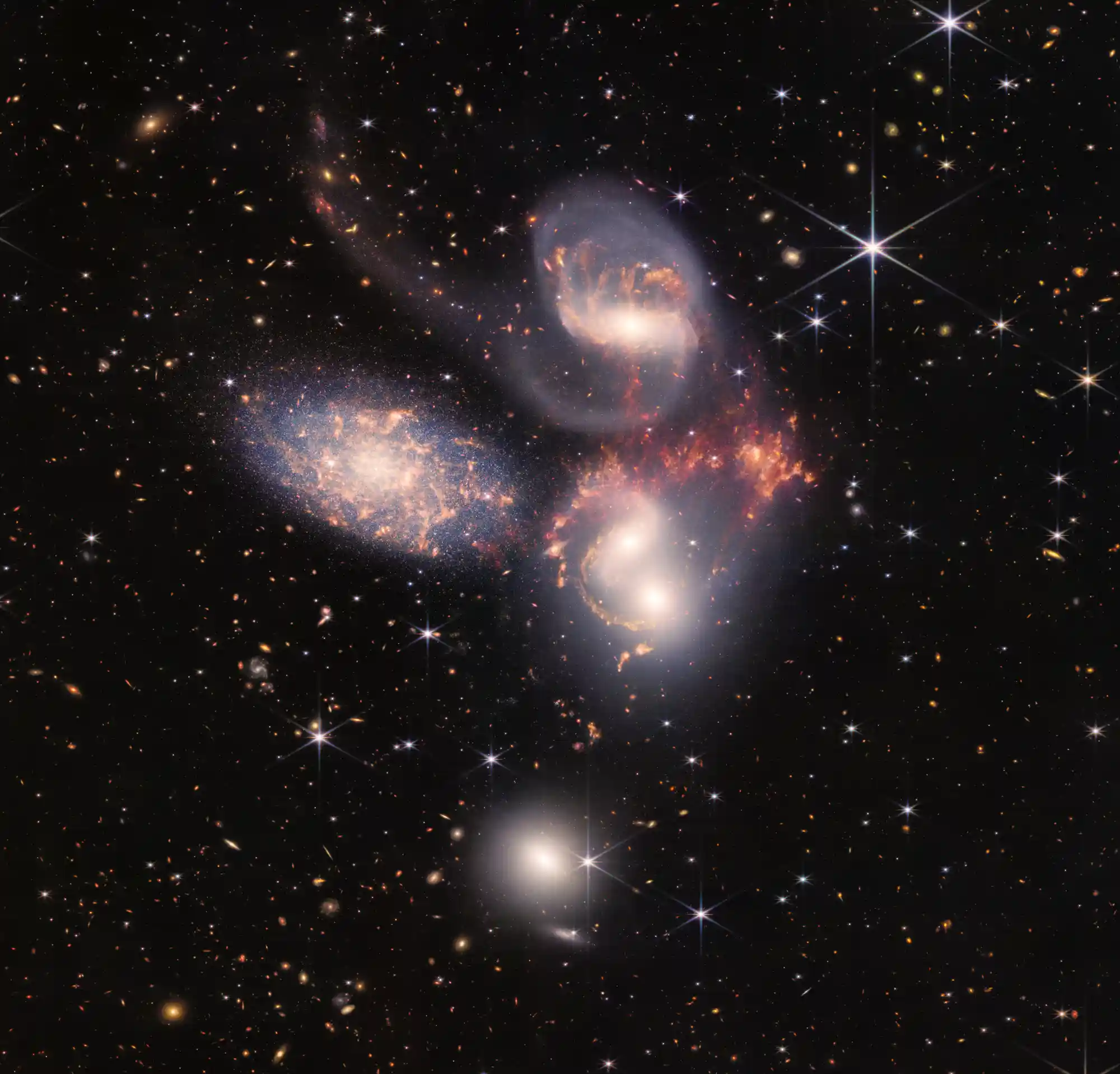
Stephan’s Quintet
Pegasus, the flying horse, is late fall’s signature constellation. It represents the winged horse that was born from the blood of Medusa when she was beheaded by Perseus. Only the front quarters of the horse are depicted in the sky and even though Pegasus is the seventh-largest constellation, it contains no outstandingly bright stars.
The constellation’s distinctive feature is the Great Square whose corners are marked by four stars of 2nd and 3rd magnitudes, although only three of the stars actually belong to Pegasus. The fourth is Alpha Andromedae, which on some old maps was called Delta Pegasi.
Within the boundaries of the flying horse, half a degree southwest of the bright spiral galaxy NGC 7331, lies Stephan’s Quintet, a remarkable compact group of galaxies which is also known as Hickson 92 and Arp 319. The galaxies are literally tearing each other apart and their shapes are warped by gravitational interactions occurring over millions of years.
Stephan’s Quintet was discovered in 1877 by the French astronomer Edouard Stephan, using the Foucault telescope at the Marseilles Observatory. The group consists of five galaxies (NGC 7317, 7318 A, 7318 B, 7319 and 7320), but only four members are actually interacting. NGC 7320 is merely a foreground galaxy, about eight times closer, projected onto the more compact group by chance.
Stephan’s Quintet is a favored object for amateur astronomers and has earned a reputation as a challenging target for good hobby telescopes. All the constituent galaxies are about 14th magnitude and appear within an area of sky only 3.5′ across. For a successful observation, you will need good seeing and moderately high power to distinguish the small galaxies from faint field stars.
NGC 7320 is the largest and brightest galaxy of the group, visible in a 8-inch telescope as an elongated hazy patch. You will need at least an 10-inch scope and dark skies to spot the other four group members. NGC 7318 A and NGC 7318 B are located a few arc minutes to the northwest of NGC 7320 and taken together they appear nearly as large as NGC 7320 in the eyepiece. The two final members, NGC 7319 and NGC 7317, can be found northeast and respectively southwest of the NGC 7318 pair.
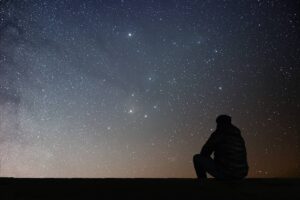
Emil, an avid astronomy writer, formerly owned and ran nightskyinfo.com, making the universe more comprehensible for his readers. He has recently handed over its reins to Tom Urbain from starlust.org, ensuring that his legacy of simplifying the stars continues to enlighten and inspire.
Discover More Deep Sky Objects to Observe🔭
This page is part of our collection of deep-sky objects articles. If you enjoyed the read, then you’ll love the following articles.

